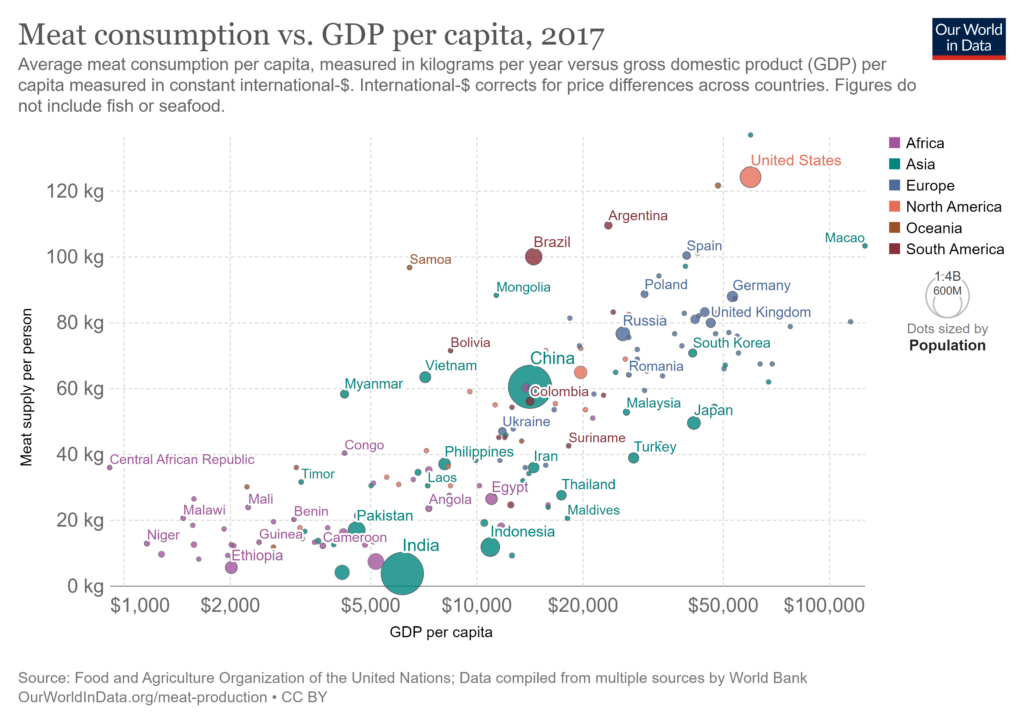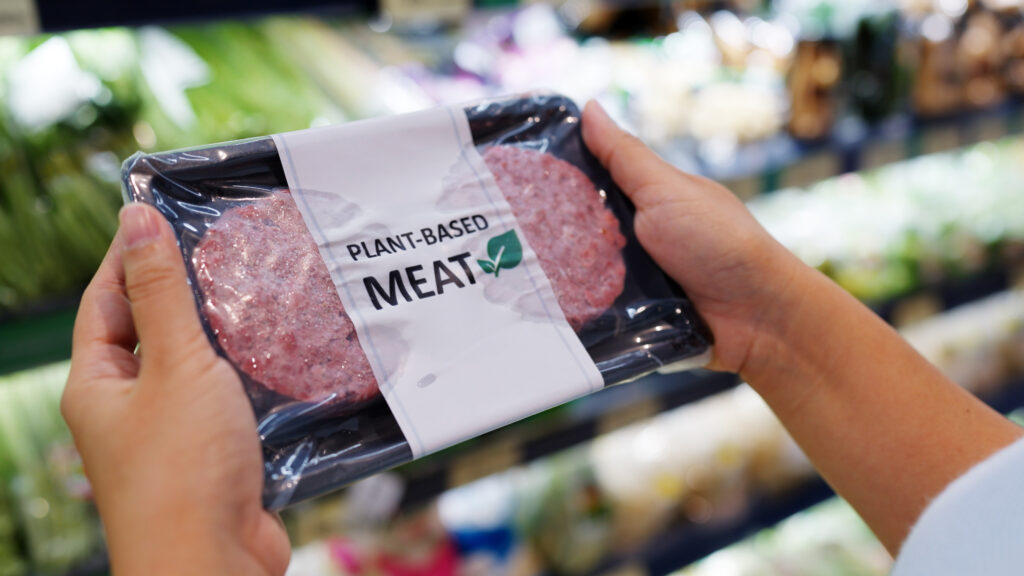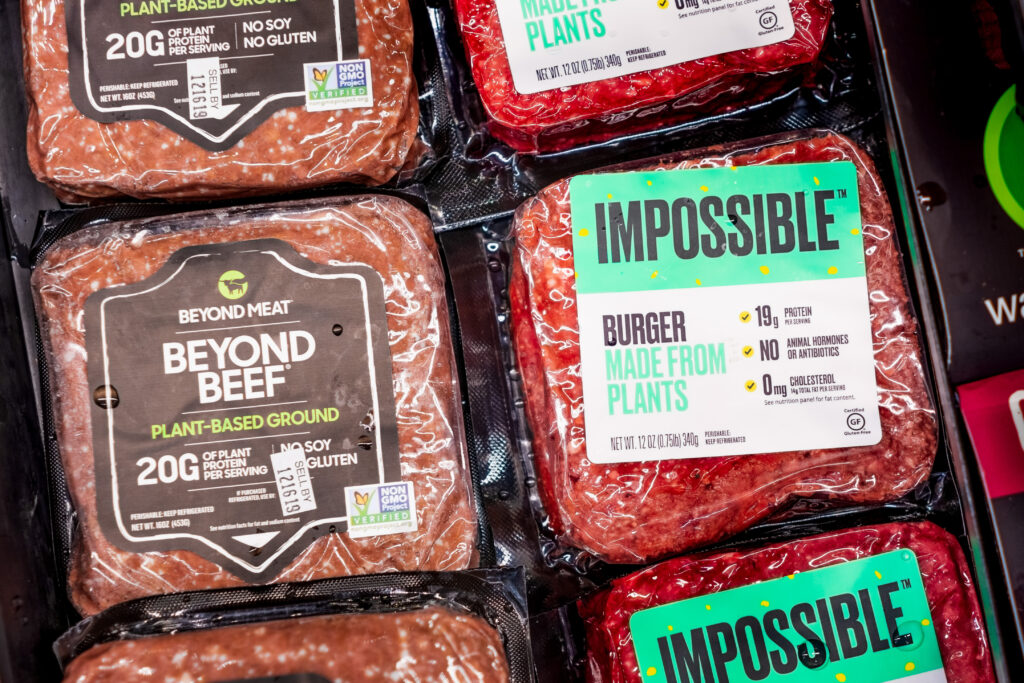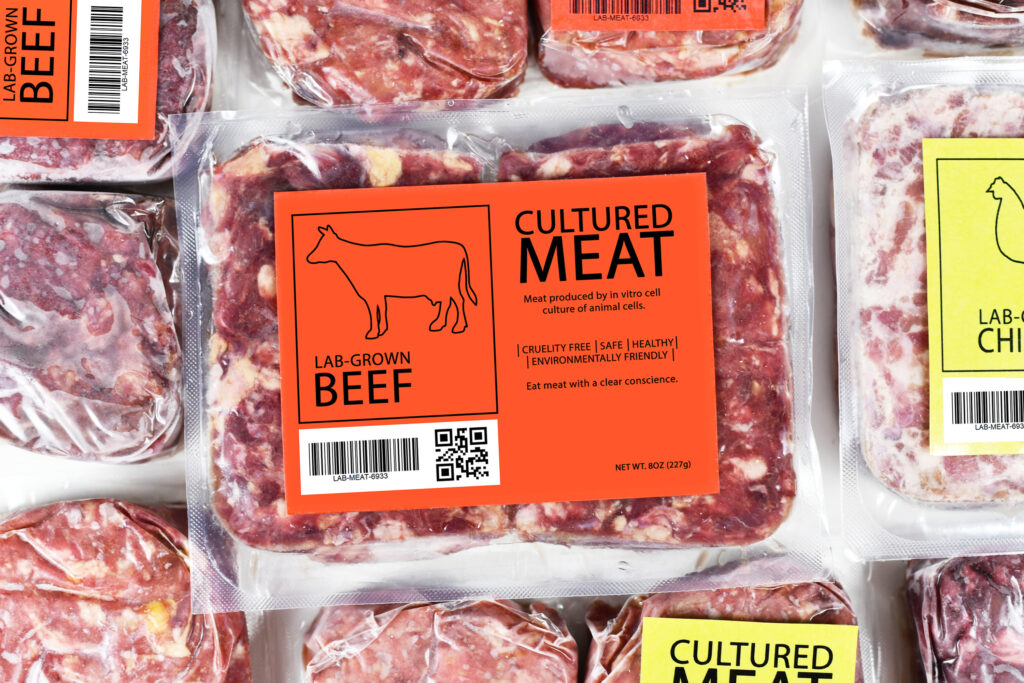What is “Alternative Meat” and why is it important?
High and consistent daily consumption of meat, and especially, red meat, was not common historically. In the past, this was mainly due to how resource-intensive animal products are in comparison to plant-based foods. Meat was thus costly and was only brought out for celebrations or eaten consistently by the wealthy. As result of other factors, including religious aversions to certain types of meat, plant-based diets have been the norm around the world for many centuries. Despite this, modern meat consumption has increased dramatically, impacting agriculture and the environment.1

“Alternative meat” does not describe any one food, but instead describes foods that attempt to simulate the consumption meat, through aspects like taste, texture, and nutrition. Unlike traditional meat substitutes (e.g., eating fried cauliflower instead of fried chicken), alternative meats seek to actually replace meat as a consumed food, and targets meat eaters in addition to vegetarians and vegans.2 This larger target audience also allows for a much larger impact if a larger number of consumers were to shift over to alternative meat instead of normal meat.
Alternative meat used to describe simple things like tofu or black bean burgers. Now, there are two main categories: “plant-based meat”, where the meat comes from plants or other substitutes, and “lab-grown meat” or “cultivated meat”, where the meat is actually grown from animal cells.
What is plant-based meat, specifically?
As the name suggests, plant-based meats are created using ingredients sourced from plants. Most plant-based meat attempts to replicate taste, smell, texture, and appearance of real meat, but use different ingredients to do so, including tofu, beans, and wheat. These ingredients reduce or remove the unhealthier aspects of meat like hormones, cholesterol, and saturated fats that people avoid. Some plant-based meats are additionally fortified with vitamins to match the nutrients in meat.
The most common ingredients in plant-based meat, such as most of Beyond Meat’s meat, include pea protein isolate and mung bean protein, both of which help to create similar amounts of protein to real meat.3 Other ingredients, including binding agents and seasonings, include coconut oil and cocoa butter, lemon juice, and beet juice extract. Other products include slightly different components – based on a plant-based version of heme (the iron molecule that makes blood taste metallic), the meat from The Impossible Burger can even “bleed”.4


Plant-based Meat Startup: Novameat
Issue being addressed
Many plant-based alternatives to meat have been criticized for being as high in fat and salt as the food they are intended to replace. In addition, many criticisms involve differences in the taste and texture of plant-based meat from real animal meats, as people eating the foods seek to replace meat entirely.5
Business model
This company uses 3D printing to print meat! The printer’s “micro-extrusion technology” produces fibers between 100 and 500 microns in diameter. This allows the complex structures of real meat to be replicated even with different materials and with a 3D printer – muscle fibers and fat are entwined manually, allowing for distinct creations. Modern printing technology also produces much larger fibers than other manufactured or compressed plant-based meat, creating better simulated meats.6 Additionally, this allows Novameat to biofortify the meat with nutrients at the structural level.
Current status
As early as January 2021, Novameat has kickstarted a collaboration with Michelin-starred restaurant Disfrutar, secured a 35-million-yen investment from the Spanish government, and claims to have created the biggest cell-based meat prototype in the world.7
●3D Printed Vegan Steak That Tastes Like Real Meat
What is lab-grown meat (cultivated meat), specifically?
Cultivation here refers to any type of biomass being grown using cellular or acellular techniques. The first usually involves in vitro tissue engineering that clones and nurtures cells. The second mostly makes use of “precision fermentation”, genetically altering microbes to create subcellular byproducts such as proteins.8 While it may sound scary or too artificial for consumption, the cheese-making enzyme microbial Rennet, which received FDA approval in the 1990s, represents an accepted cultured product made from precision fermentation that has become more popular than the animal-based product it was emulating.9


Firstly, a small biopsy taken from a living donor animal (typically with anesthesia, so the animal does not experience any pain; this also does not harm the animal, as the biopsy takes a very small part of them). The cluster of cells is then grown through the addition of nutrients like glucose, amino acids, vitamins, and proteins. The cells replicate, resulting in growth that is organic and accurately resembles the original animal’s meat cells. These cells can even be grown in different ways, including on specific shelves, that encourage the cells to grow meat-like textures or tastes.10
Lab-grown Meat Startup : Mirai Foods
Issue being addressed
In addition to common issues, like the fact that people find lab-grown meat to be gross, there are cultural differences in accepting cultivated meat. For example, according to the CEO of Mirai Foods, Europeans have a very high standard in terms of food quality, taste, and healthiness of their food, and don’t like to eat anything that is genetically modified.11
Business model
After taking a sample using a live animal biopsy, the fat stem cells and muscle stem cells from the sample are isolated and transferred into a “bioreactor” that creates the optimal conditions for cell proliferation. This is then supplemented by active nutritional additions and injections. This allows the two types of cells to be intertwined when grown via specific shelving at the microscopic level, which gives the company much more freedom in crafting and harvesting.11
Current status
Currently, Singapore is the only region in the world where cell-cultured meat has seen accepting regulation (most concerns cite food safety), limiting the ability for Mirai Foods to expand their market. In March 2021, Mirai Foods announced it raised US$2.2 million in a second seed round, bringing the total seed financing raised in 2021 to $4.5m.12
All URLs were viewed on 6-13-2022.
1 Meat consumption vs. GDP per capita, 2017 (ourworldindata.org), CC BY https://ourworldindata.org/grapher/meat-consumption-vs-gdp-per-capita
2 What Is Alternative Meat and Is It Better for the Environment? (straydoginstitute.org) https://straydoginstitute.org/alternative-meat/
3 Ingredients | What is Plant Based Meat? | Beyond Meat https://www.beyondmeat.com/en-US/about/our-ingredients/
4 Heme, Health, and the Plant-Based Diet | Impossible Foods https://impossiblefoods.com/blog/heme-health-the-essentials
5 Impossible CEO on criticism that plant-based ‘meat’ is unhealthy (cnbc.com) https://www.cnbc.com/2020/07/21/impossible-ceo-on-criticism-that-plant-based-meat-is-unhealthy.html
6 Plant-Based Meat | NOVAMEAT | Barcelona https://www.novameat.com/
7 NOVAMEAT – Crunchbase Company Profile & Funding https://www.crunchbase.com/organization/novameat
8 Overcoming Bias Will Unlock the Cultivated Economy – Stray Dog Institute https://straydoginstitute.org/overcoming-bias-will-unlock-the-cultivated-economy/#_edn2
9 What Is Cellular Agriculture? (new-harvest.org) https://new-harvest.org/what-is-cellular-agriculture/
10 The science of cultivated meat | GFI https://gfi.org/science/the-science-of-cultivated-meat/#:~:text=Cultivated%20meat%2C%20also%20known%20as,by%20cultivating%20animal%20cells%20directly.
11 MIRAI – Delicious meat cultivated from animal cells (miraifoods.com) https://www.miraifoods.com/
12 Swiss cultivated meat start-up raises $2.2m; aims for 2022 product launch (ingredientsnetwork.com) https://www.ingredientsnetwork.com/swiss-cultivated-meat-startup-raises-2-2m-aims-news111405.html
MIRAI FOODS – Crunchbase Company Profile & Funding https://www.crunchbase.com/organization/mirai-foods





